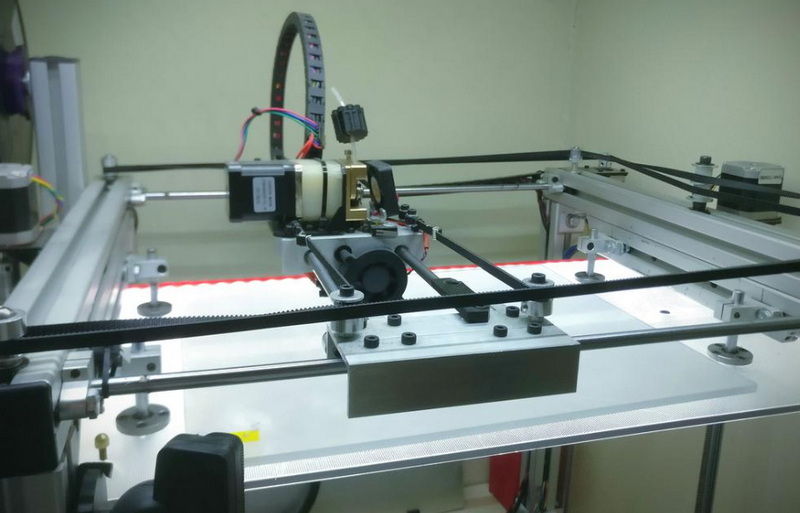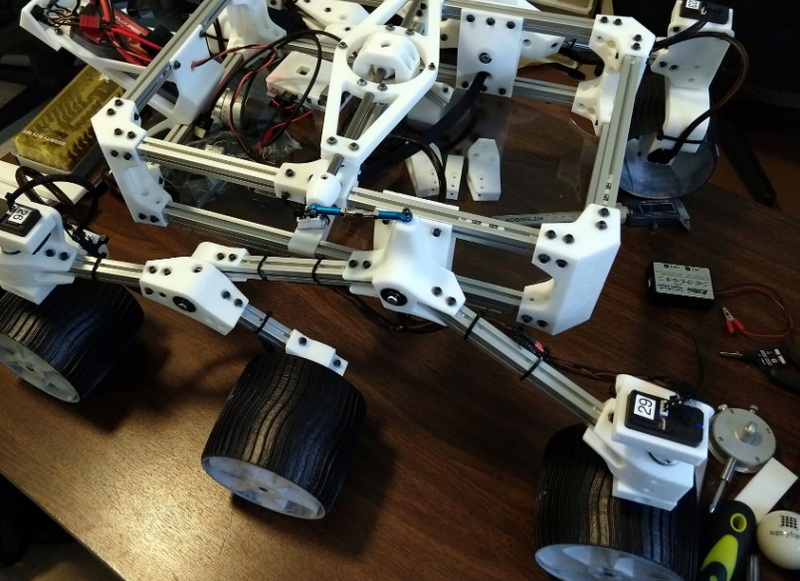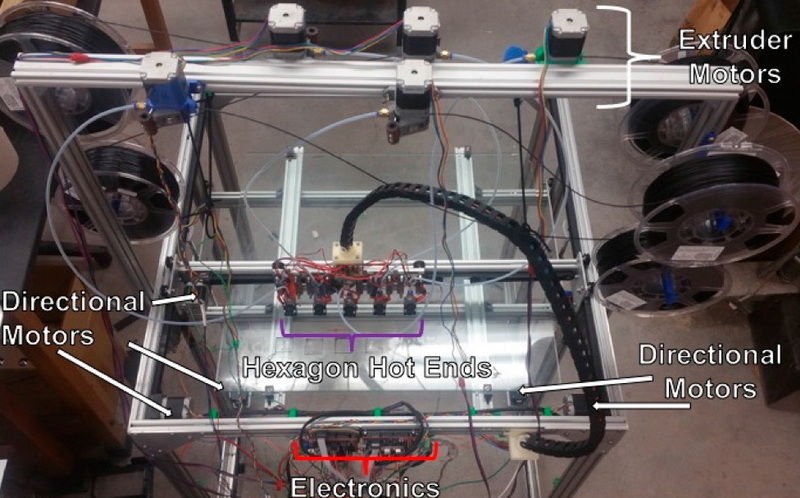Content Menu
● Introduction to Aluminum Extrusion in 3D Printing
● The Role of Aluminum Extrusion in Enhancing Stability and Precision
● Material Selection and Alloy Considerations
● Optimizing Aluminum Extrusion Frames for Enhanced Accuracy
● Design Considerations for Aluminum Extrusion in 3D Printing
● Integrating 3D Printing and Aluminum Extrusion for Custom Solutions
● Advanced Techniques and Innovations
● Maintaining Aluminum Extrusion Components
● The Future of Aluminum Extrusion in 3D Printing
● Conclusion
● FAQ: Aluminum Extrusion in 3D Printing
>> 1. What are the primary benefits of using aluminum extrusion in 3D printer frames?
>> 2. Can custom aluminum extrusions be designed for specific 3D printing projects?
>> 3. What type of maintenance is required for aluminum extrusion components in 3D printers?
>> 4. How does combining 3D printing and aluminum extrusion lead to cost savings?
>> 5. What are some advanced techniques being developed to enhance aluminum extrusion in 3D printing?
● Citations:
Aluminum extrusion has become a pivotal component in enhancing the performance and reliability of 3D printers. By leveraging the unique properties of aluminum, manufacturers and hobbyists alike can achieve higher precision, stability, and overall print quality. This article delves into the various ways aluminum extrusion optimizes 3D printing, covering material selection, design considerations, and the integration of advanced manufacturing techniques.

Introduction to Aluminum Extrusion in 3D Printing
Aluminum extrusion involves shaping aluminum by forcing it through a die, creating specific profiles that can be used as structural components in 3D printers[4]. The benefits of using aluminum in 3D printing are numerous, including its lightweight nature, high strength, cost-effectiveness, and versatility[3]. These properties make aluminum extrusion an ideal choice for constructing the frames and other critical parts of 3D printers.
The Role of Aluminum Extrusion in Enhancing Stability and Precision
One of the primary advantages of aluminum extrusion in 3D printing is its ability to enhance stability and precision[3]. A rigid frame made from aluminum minimizes vibrations during the printing process, which is crucial for achieving high-quality prints[3]. This stability ensures consistent layer adhesion and accurate dimensional tolerances, resulting in better overall print quality[3].
Many popular 3D printers, such as the Prusa i3 series and the Creality Ender series, utilize aluminum extrusion in their designs[3]. These printers are known for their robust aluminum frames, which contribute to their reputation for reliability and print quality[3].
Material Selection and Alloy Considerations
Selecting the right aluminum alloy is a critical step in building a reliable 3D printer frame[1]. Alloys with high strength and rigidity, such as 6061 or 6082, are excellent choices[1]. These alloys offer superior mechanical properties, providing stronger structural support that prevents distortion or wobbling during the printing process[1].
Common Aluminum Alloys for 3D Printer Frames:
- 6061 Aluminum: Known for its high strength, excellent corrosion resistance, and good weldability.
- 6082 Aluminum: Offers similar properties to 6061 but with slightly higher strength.
- 2024 Aluminum: Used in high-performance applications due to its exceptional strength, particularly after heat treatment[2].
Optimizing Aluminum Extrusion Frames for Enhanced Accuracy
Optimizing aluminum extrusion frames can significantly improve the structural strength and printing accuracy of 3D printers[1]. Proper design and construction can effectively reduce vibration and enhance stability, ultimately improving printing quality[1].
Key Steps to Optimize Aluminum Extrusion Frames:
1. Select the Right Size and Material: Choose an aluminum alloy with high strength and rigidity, such as 6061 or 6082. Frame sizes like 2020, 2040, or 3030 are commonly available, with larger sizes (e.g., 3030) providing greater support and stability[1].
2. Ensure Proper Assembly and Alignment: Precise assembly and alignment are crucial for maintaining the frame's structural integrity. Use high-quality connectors and fasteners to ensure secure connections between the aluminum extrusions.
3. Minimize Vibration: Implement vibration damping techniques, such as adding rubber feet or using vibration-absorbing materials, to further reduce vibrations during printing.
Design Considerations for Aluminum Extrusion in 3D Printing
When designing with aluminum extrusions, several factors should be considered to ensure optimal performance and cost-effectiveness[4].
Key Design Considerations:
- Overall Cross Section Size: The circumscribing circle diameter (CCD) should ideally be between one and ten inches for cost-effectiveness[4].
- Weight-per-Foot: Keeping the weight-per-foot under 3 pounds enhances design and press operation[4].
- Balanced Walls: Ensure that the walls of the extrusion are balanced to maintain structural integrity[4].
- Minimize Hollows: Avoiding or minimizing hollow sections can improve extrudability[4].
- Generous Tapers: Using generous tapers can facilitate the extrusion process[4].
- Symmetry: Practicing symmetry and minimizing asymmetrical details can enhance the extrusion's structural stability[4].
- Use Grooves, Webs, and Ribs: Incorporating grooves, webs, and ribs can add strength and rigidity to the extrusion[4].
- Minimize Perimeter/Cross-Section Ratio: Reducing the perimeter-to-cross-section ratio can improve the extrusion's efficiency[4].

Integrating 3D Printing and Aluminum Extrusion for Custom Solutions
Combining 3D printing with aluminum extrusion offers enhanced design flexibility and the ability to create custom solutions tailored to specific requirements[5]. This integration allows for rapid prototyping and cost savings[5].
Benefits of Combining 3D Printing and Aluminum Extrusion:
- Enhanced Design Flexibility: Designers can create complex parts that combine the strength and stability of aluminum extrusions with the intricate geometries achievable through 3D printing[5].
- Rapid Prototyping: 3D printing can be used to create prototypes of components that can then be tested for fit and function with extruded aluminum parts[5].
- Cost Savings: Producing custom parts on demand reduces the need for large inventories of standard components, and 3D printing minimizes material waste[5].
Advanced Techniques and Innovations
Ongoing research and development are focused on enhancing the capabilities of aluminum extrusion in 3D printing. This includes the development of new aluminum alloys with improved properties, such as increased corrosion resistance and improved thermal conductivity[3].
Current Research and Innovations:
- Development of New Aluminum Alloys: Researchers are exploring alloys that offer enhanced performance characteristics, such as increased corrosion resistance and improved thermal conductivity[3].
- Advancements in Additive Manufacturing Processes: Innovations in additive manufacturing processes may allow for more complex designs and faster production times[3].
- Integration of Metal Matrix Composites (MMCs): A new process using fused filament fabrication 3D printing has been developed to make net shape MMCs without tooling or machining[6]. This involves printing an alumina preform and then using pressure-less infiltration with a molten aluminum alloy to form the composite[6].
Maintaining Aluminum Extrusion Components
Regular maintenance is essential for ensuring the optimal performance and longevity of aluminum extrusion components in 3D printers[3].
Maintenance Tips:
- Regular Cleaning: Keep aluminum components clean to prevent the buildup of dust and debris, which can affect performance[3].
- Check for Wear: Regularly inspect aluminum extrusions for signs of wear or damage[3].
- Ensure Secure Connections: Verify that all connections are secure and properly tightened[3].
The Future of Aluminum Extrusion in 3D Printing
The integration of aluminum extrusion in additive manufacturing is expected to grow as more manufacturers recognize its benefits[3]. As 3D printing technology continues to evolve, the use of aluminum for both structural components and printed parts will likely increase[3]. This trend will lead to more efficient production processes and the ability to create even more complex geometries[3].
Conclusion
Aluminum extrusion plays a crucial role in enhancing the performance, reliability, and efficiency of 3D printers. Its lightweight strength, cost-effectiveness, and versatility make it an ideal choice for constructing frames and other critical components. By optimizing the design, material selection, and maintenance of aluminum extrusion components, manufacturers and hobbyists can achieve higher precision, stability, and overall print quality. As technology continues to advance, the potential for aluminum in 3D printing will only expand, paving the way for innovative applications and solutions.

FAQ: Aluminum Extrusion in 3D Printing
1. What are the primary benefits of using aluminum extrusion in 3D printer frames?
Aluminum extrusion offers lightweight strength, cost-effectiveness, and versatility, making it an ideal choice for 3D printer frames and components[3]. The rigidity of aluminum extrusions minimizes vibrations during printing, leading to higher precision and better print quality[3].
2. Can custom aluminum extrusions be designed for specific 3D printing projects?
Yes, custom aluminum extrusions can be designed to meet specific project requirements, providing tailored solutions for unique applications[3]. Integrating 3D printing with aluminum extrusion allows for enhanced design flexibility and the creation of complex parts[5].
3. What type of maintenance is required for aluminum extrusion components in 3D printers?
Regular cleaning, checking for wear, and ensuring secure connections are essential for maintaining aluminum components and ensuring optimal performance[3]. Proper maintenance helps prevent the buildup of dust and debris, which can affect performance[3].
4. How does combining 3D printing and aluminum extrusion lead to cost savings?
Combining these technologies allows for rapid prototyping, reducing the need for large inventories of standard components[5]. 3D printing minimizes material waste, lowering production costs and leading to more sustainable manufacturing practices[5].
5. What are some advanced techniques being developed to enhance aluminum extrusion in 3D printing?
Current research and innovations include the development of new aluminum alloys with improved properties and advancements in additive manufacturing processes[3]. The integration of metal matrix composites (MMCs) through fused filament fabrication is also being explored[6].
Citations:
[1] https://jlcmc.com/blog/optimizing-aluminum-extrusion-frames-for-enhanced-3d-printing-accuracy
[2] https://pmc.ncbi.nlm.nih.gov/articles/PMC9655778/
[3] https://www.yjing-extrusion.com/what-are-the-benefits-of-using-aluminum-extrusion-in-3d-printing.html
[4] https://aec.org/key-design-considerations
[5] https://www.yjing-extrusion.com/how-can-you-combine-3d-printing-and-aluminum-extrusion-for-custom-solutions.html
[6] https://pmc.ncbi.nlm.nih.gov/articles/PMC10539312/
[7] https://aluminumextrusions.net/prototyping-aluminum-extrusions/
[8] https://aec.org/features-benefits






















